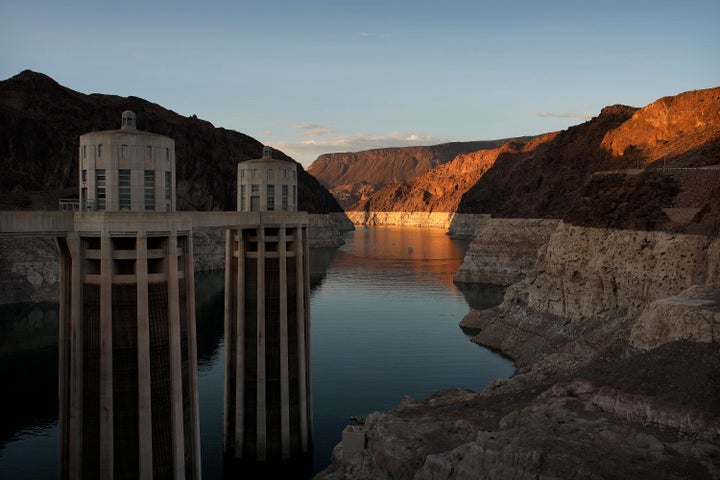The White House on Tuesday issued new proposals to dramatically cut how much water states can draw from the Colorado River, a last-ditch effort to protect the drought-stricken resource used by 40 million Americans.
The Interior Department released an environmental review on Tuesday that homes in on three options for the Colorado River after the seven states and tribes that depend on its waters failed to reach an agreement to determine how cuts would fall.
One option would split cuts based on seniority of water rights, meaning California — the oldest user of the river — would see minimal changes while Arizona and Nevada would face sharp limitations. A second plan would evenly distribute cuts across Arizona, Nevada and California, ignoring legal seniority at the expense of the latter’s agriculture that supplies produce to the entire country.
A third option, to do nothing, would ultimately lead to catastrophe for all.
The federal government is only able to impose water limits on states that draw reserves released from Lake Mead and Lake Powell, so the draft analysis focuses on downstream states Arizona, California and Nevada. Four other states and other tribal governments also rely on the Colorado River basin.
The Biden administration did not issue a public stance on any of the options. It’s expected to make a decision about potential cuts by August, although Tommy Beaudreau, the deputy secretary of the Interior Department, told The New York Times the government would prefer states to work out a plan among themselves.

The plan reflects a serious and urgent threat to the western United States. Water levels in Lake Mead and Lake Powell have plummeted over the past 23 years of drought, leading to dramatic declines in the Colorado River’s flow. Officials worry the water may one day be too low to turn the turbines in the lakes that generate electricity, or drop so far that it won’t be able to reach the intake valves that flow out into the river.
If that happens, an event known as “dead pool,” water wouldn’t flow downstream to southern states at all and the river would effectively stop.
The federal government has urged states to cut their water use and offered billions of dollars in incentives to farmers and cities to do so, but states missed a deadline last year to come up with a proposal. Six of the states that rely on the Colorado River reached an agreement to major cuts in January, but California rejected the plan, prompting the latest intervention.
A wet winter full of rain and snow that drew parts of California out of drought will help water levels in the short term and may limit the amount of cuts required, but experts warn the weather is merely a balm for a deeper wound that would take much more to heal.
The stakes for the region are high. Some 40 million Americans depend on the Colorado River basin for drinking water and its supply irrigates about 5.5 million acres of agriculture, mostly in California. The dams on Lake Mead and Lake Powell create electricity that powers millions of homes.
“In our mind, the appropriate presentation is grounded in the secretary’s authorities to provide for human health and safety, manage the system under emergency conditions, and provide for beneficial use,” Beaudreau told The Washington Post. “It is the secretary’s responsibility, and she has the authority, to protect the system.”

